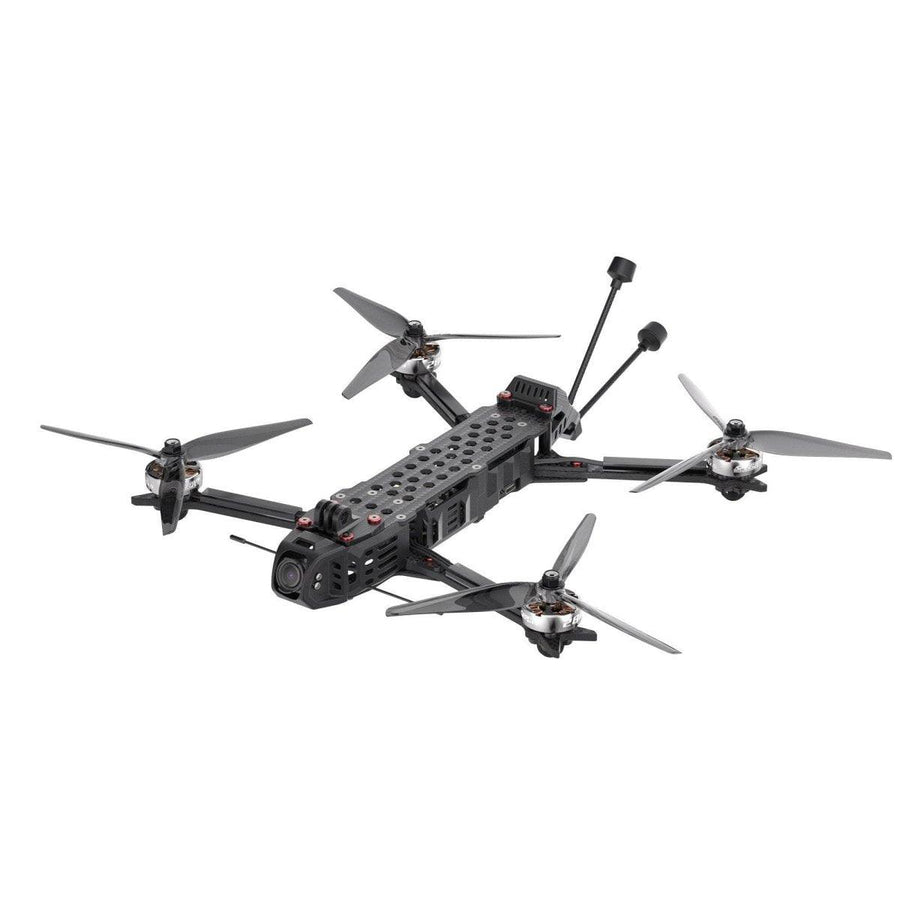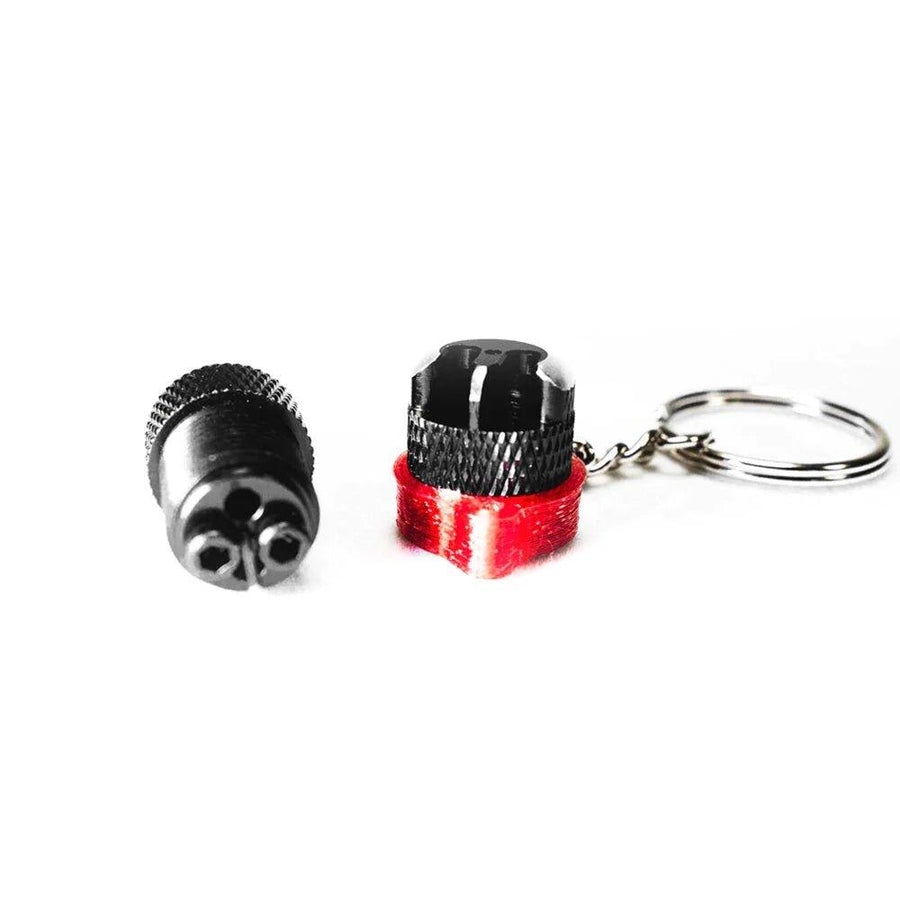A Comprehensive Guide to Video Transmitters (VTX) for FPV Drones
The Video Transmitter (VTX) is a vital component of FPV (First-Person View) systems, enabling wireless transmission of camera images to FPV goggles. When selecting a 5.8GHz VTX, it is important to consider factors such as compact size, features, channel support, accurate frequency transmission, long-range capability, high output power, and minimal interference. This article will provide a detailed overview of these key factors to help you choose the optimal 5.8GHz VTX for your FPV drone, ensuring an immersive and enjoyable flying experience.
Analog vs. Digital FPV Systems: FPV systems are divided into two types: analog and digital. Analog systems are not compatible with digital FPV gear. Currently, there are three digital FPV systems available: DJI, Walksnail, and HDZero. It's crucial to note that cameras and VTXs designed for a specific digital FPV system are not compatible with other digital FPV systems. To better understand the pros and cons of each system, refer to our review at [link to the review article].
VTX Recommendations: In this section, we will recommend the best VTX options for different FPV systems and applications.
DJI:
- DJI O3: This system offers exceptional image quality and range, making it a popular choice for cinematic and freestyle FPV pilots. It integrates FPV capabilities with a 4K action camera. Note that it is compatible only with DJI FPV Goggles V2, Goggles 2, and Goggles Integra.
- RunCam Link / Caddx Vista: A compact and lightweight VTX option suitable for DJI pilots who prioritize easy mounting and don't require onboard recording.
Walksnail:
- Walksnail Avatar HD VTX V2: An excellent all-around VTX choice with enhanced features such as onboard 1080p recording and Gyroflow support for image stabilization. It offers greater frame compatibility with additional mounting options.
- Walksnail Avatar HD Mini 1S Lite VTX: Ideal for micro drones like Tiny Whoops, this compact VTX provides 720p and 1080p HD FPV capabilities with onboard video recording.
HDZero:
- HDZero 1W Freestyle: The best VTX option for freestyle and long-range flights, offering 1W transmit power, massive heatsinks for protection and cooling, and compatibility with 2S-6S batteries.
- HDZero Race V2 VTX: Designed for racing, this VTX features a compact and lightweight design, SmartAudio compatibility, and a built-in TVS diode for power protection.
Analog:
- Rush Tank Ultimate Plus: A reliable analog VTX with 800mW high transmit power, suitable for various applications.
- TBS Unify Pro32 HV: A versatile premium VTX known for its accurate output power levels, clean signal transmission, and compatibility with TBS Crossfire systems.
Image Quality and Signal Quality: While VTX prices may vary, it's important to note that image quality primarily depends on the FPV camera, not the VTX. However, choosing a VTX with excellent features and reliable signal quality can enhance the overall flying experience. Factors such as antenna quality, placement, and accurate transmission frequency impact signal quality and range.
Antenna Connector: VTXs come with various antenna connectors, including SMA, RP-SMA, IPEX (UFL), and MMCX. Understanding the connector type of your VTX is crucial when upgrading or replacing antennas.
Powering VTX: VTXs typically support a wide range of input voltages, allowing direct power connection from the drone's battery or utilizing a voltage regulator (BEC) on the flight controller. It's essential to ensure the power supply can provide sufficient current for optimal VTX performance.
Output Power and Antennas: The output power of a VTX determines its range. Higher power generally means more range, but it also generates more heat and potential interference. It's important to select an appropriate output power level based on your flying environment and adhere to legal limits. Additionally, antenna quality and placement significantly impact range and signal quality.
Understanding VTX Channels: VTX channels are preset frequencies used for video transmission. Analog systems have five bands (A, B, E, F, R) with eight channels per band, while digital systems have a simpler channel management with just one band. Careful channel allocation minimizes interference when flying with others.
Onboard Microphone: Some analog VTXs and FPV cameras offer built-in microphones, providing the option to hear the motors and beeper through the FPV goggles' audio output.
Key Considerations for Analog VTX: Analog systems remain popular due to their availability, affordability, compact size, and low latency. When flying with others, it's crucial to choose a high-quality analog VTX to avoid interfering with other pilots' signals.
Changing VTX Settings: VTX settings can be adjusted using buttons on the VTX itself or through Betaflight OSD if the VTX supports SmartAudio or Tramp protocols. OSD control offers a more efficient and convenient method for changing settings.
Pitmode: Pitmode is a feature that lowers the VTX's output power to almost zero when the quad is powered on or crashes. This prevents disruption to other pilots' signals during these events.
Connecting an Analog FPV Camera to a VTX: Connecting an FPV camera to a VTX may vary depending on the components involved. Basic connections include video input, power, and ground. Alternatively, the camera can be connected to the VTX through the flight controller if it has a built-in OSD chip.
Best Practices Using VTX: Ensure you never power up a VTX without connecting an antenna to prevent damage caused by excessive heat. To avoid noisy video, address electrical noise generated by motors and ESCs through low ESR capacitors, proper wiring and grounding, and dedicated voltage regulators or filters.
Conclusion: Understanding video transmitters is essential for an optimal FPV experience. By considering factors such as output power, channels, antennas, image quality, and signal quality, you can select the most suitable VTX for your needs. Follow best practices, adhere to legal limits, and utilize proper settings to enjoy a seamless and enjoyable FPV flying experience with your drone.








